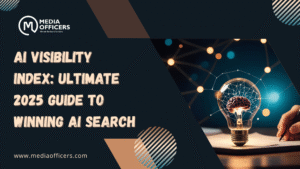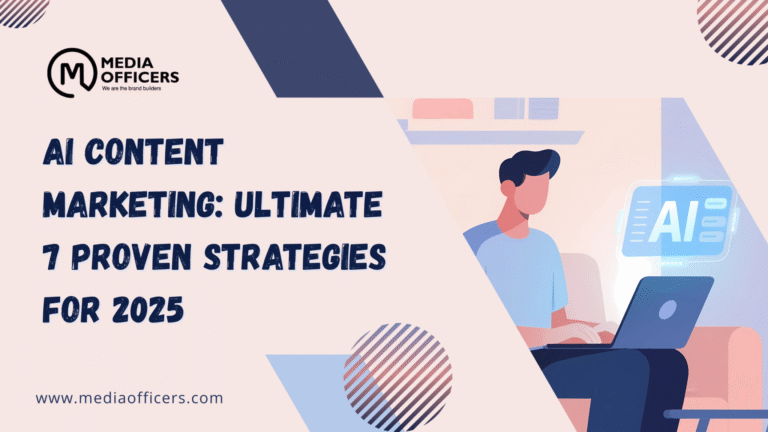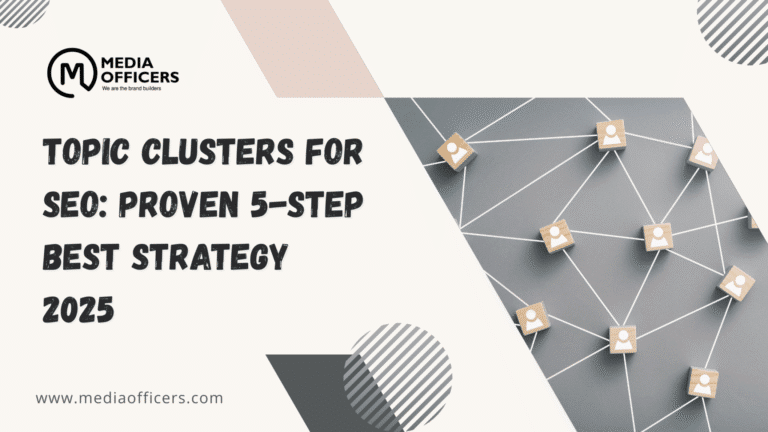The AI Visibility Index is reshaping how brands think about discovery in AI search, turning traditional rankings into a new metric for awareness and purchase intent. This data-driven framework helps marketers understand which brands are effectively appearing in AI-generated answers and which signals drive trust. By analyzing thousands of prompts across AI platforms, the AI Visibility Index reveals the new hierarchy of visibility and shows why mentions, sources, and user conversations matter as much as or more than classic search rankings.
In this guide, you’ll learn what the AI Visibility Index measures, how it’s built, and the practical steps brands can take to improve their standing in AI search environments. Whether you operate in retail, tech, finance, or services, the principles behind the AI Visibility Index apply audience discovery is shifting from traditional SERP dominance to a broader ecosystem of prompts, citations, and authentic engagement.
What is the AI Visibility Index?
The AI Visibility Index is a benchmarking study from Semrush Enterprise that evaluates a brand’s presence across the world’s leading AI search engines. Unlike conventional search metrics, the index focuses on how brands are learned, cited, and recommended by AI models when responding to real-world prompts. It considers 2,500 prompts evaluated in both ChatGPT and AI Mode, spanning five key verticals that matter most to buyers and influencers:
- Business & Professional Services
- Digital Technology & Software
- Consumer Electronics
- Fashion & Apparel
- Finance
From the outset, the AI Visibility Index reframes success. Brands no longer rely solely on top Google rankings. Instead, they build a pattern of visibility that models recognize structured data, clear pricing signals, credible third-party validation, and a steady stream of authentic mentions across the web.
How the AI Visibility Index works
At the heart of the AI Visibility Index is a transparent methodology designed to replicate how AI systems learn and decide which brands to mention in responses. The framework aggregates signal data across multiple dimensions to paint a complete picture of brand visibility in AI-generated answers.
Data sources and prompts
The study analyzes thousands of prompts used by real consumers and professionals. By testing multiple prompts and prompts variants, the index reveals which brands consistently show up in AI responses and how those mentions compare against traditional sources.
Signals that drive AI trust
AI models prefer brands that demonstrate trustworthiness through a combination of signals. These include:
- Structured data that helps AI locate and cite facts accurately.
- Transparent pricing and clear product descriptions that reduce ambiguity.
- Strong third-party validation such as reviews, industry awards, and credible media coverage.
- Authentic user-generated content from communities, forums, and independent reviewers.
In practice, these signals create a working hierarchy: brands that provide well-structured information, verifiable notes, and fresh UGC are more likely to appear in AI responses, even if their organic SERP rankings aren’t the highest.
Key takeaways every marketer should know
Here are the most actionable conclusions drawn from the AI Visibility Index. These insights help translate data into concrete optimization steps.
- SEO ≠ AI visibility. Top Google rankings do not guarantee AI-generated placement. The AI ecosystem rewards structured data, transparent pricing, and credible validation just as strongly as it rewards high-quality content.
- Mentions ≠ sources. Being cited in AI answers matters more than simply being used as a data point. Mentions amplify awareness and can drive purchase intent more effectively than mere attribute usage.
- The brand effect is real. Iconic names that own their niches through consistent, structured visibility signals tend to dominate AI conversations. Patagonia, Garmin, and peers have shown this pattern by aligning discovery and trust signals across channels.
- UGC is the new authority. Forums, reviews, and authentic user conversations have emerged as the primary drivers of AI visibility. Real-world voices establish credibility that AI models defer to when answering questions.
Beyond those takeaways lies a practical blueprint for growth. Brands that align discovery, authority, and sentiment across AI platforms create a durable advantage in AI search. The AI Visibility Index is not a one-time snapshot it’s a performance framework you can engineer over time.
Industry-specific insights: who’s winning and why
Across the five industries tracked, the winners share a common playbook: they harmonize content, data, and community signals into a cohesive AI-friendly footprint. Here’s how several sectors are applying the principles behind the AI Visibility Index.
Business & Professional Services
In services, AI models favor brands that offer transparent pricing, case studies, and verifiable credentials. Firms that publish structured service descriptions, publish client outcomes, and maintain an accessible knowledge base tend to be cited more often in AI responses. The result is increased first-contact trust and higher click-through from AI-generated recommendations.
Digital Technology & Software
Tech brands excel when they provide open, well-documented APIs, clear integration guides, and third-party benchmarks. ARPU-friendly product pages, comparison guides, and independent analyst mentions help AI models place these brands higher in AI Mode results and in ChatGPT answers alike.
Consumer Electronics
For hardware and devices, the focus is on accuracy, specs, and user reviews. Brands that supply up-to-date specifications, FAQ content, and real user feedback see stronger AI mentions and more reliable citations in responses crucial for consideration and purchase decisions in a crowded market.
Fashion & Apparel
Style buyers often rely on authentic voices and trend signals. Brands that curate user-generated galleries, credible influencer content, and transparent pricing tend to gain favorable AI mentions, turning style queries into brand interactions rather than just product references.
Finance
Financial brands win when they provide clear product attributes, risk disclosures, and independent ratings. Verified data, regulatory compliance notes, and authoritative reviews foster trustworthy AI responses that guide user decisions in a high-stakes category.
Practical steps to improve AI visibility
Use the AI Visibility Index as a roadmap to craft an AI-first strategy. The following steps translate the research into day-to-day actions that boost AI visibility across platforms.
- Audit your data architecture. Ensure your site uses structured data and schema types that AI models can easily parse and cite. Rich snippets, product schemas, FAQ pages, and review schemas help models learn your content with higher fidelity.
- Clarify pricing and offerings. Transparent pricing tables, clear tiers, and comparison matrices reduce confusion and improve AI trust signals.
- Build credible third-party validation. Seek independent reviews, case studies, and media coverage that can be cited by AI models as trustworthy sources.
- Encourage authentic UGC. Foster communities, forums, and review ecosystems where real customers share experiences. Normalize citations and links back to your primary content.
- Align content with intent. Create guides that answer common prompts, FAQs, and how-to content that AI models can reference when users ask questions about your products or services.
- Measure AI-specific signals. Track mentions, citations, and sentiment across AI outputs. Use these signals to calibrate your content calendar and on-page optimization.
Implementing these steps helps bridge the gap between traditional SEO success and AI-driven visibility. The AI Visibility Index provides a practical framework to test, learn, and scale your approach rather than relying on intuition alone.
Frequently Asked Questions
What is the AI Visibility Index?
The AI Visibility Index is a Semrush Enterprise benchmark that measures how brands perform in AI search environments, analyzing thousands of prompts across ChatGPT and AI Mode to reveal which brands are most visible and trusted by AI models.
How is AI visibility measured and what signals matter most?
AI visibility is measured by how often a brand is mentioned and cited in AI-generated answers, not just by traditional rankings. Key signals include structured data, transparent pricing, third-party validation, and authentic user-generated content that AI models can reference.
How can a brand improve its AI visibility?
Improve AI visibility by enhancing data structure and clarity, publishing credible third-party validation, fostering authentic UGC, and creating prompt-aligned content that AI models can use as reliable sources. Regular audits of citations and sentiment help sustain improvement over time.
Is AI visibility linked to traditional SEO performance?
Yes, in meaning but not in direct causation. Strong traditional SEO helps, but AI visibility requires additional signals such as mentions, citations, and user-generated content that AI models prefer when answering prompts.
Conclusion
The AI Visibility Index represents a paradigm shift in how brands think about discovery, trust, and purchase intent across AI search. By moving beyond page one rankings and embracing structured data, credible validation, and authentic conversations, brands can engineer visibility that AI models recognize and users trust. The five-industry insights, practical steps, and the step-by-step approach outlined above provide a clear blueprint to lead in AI search in 2025 and beyond. Start by aligning your data architecture with AI-friendly signals, cultivate credible external validation, and nurture authentic user voices. The AI Visibility Index isn’t a one-off study it’s a strategic framework for sustained growth in an AI-powered world.





